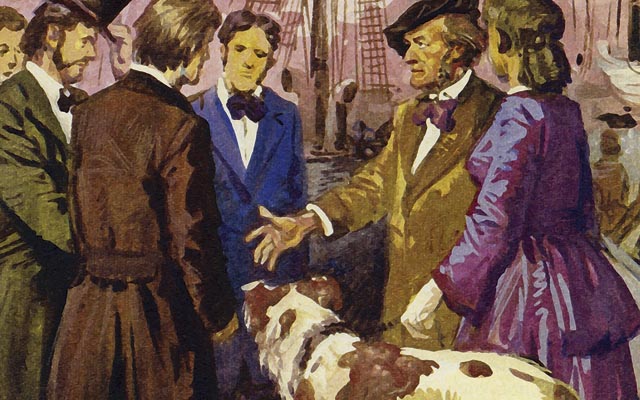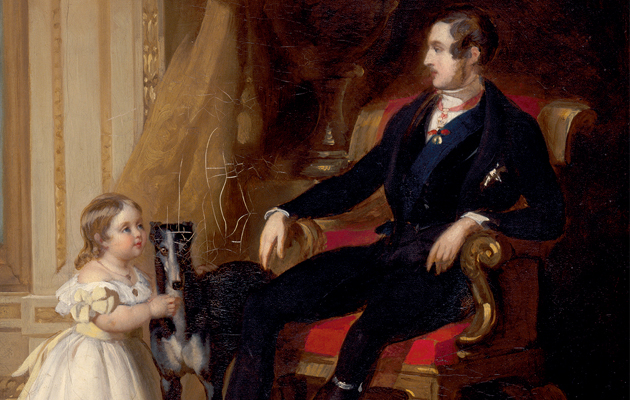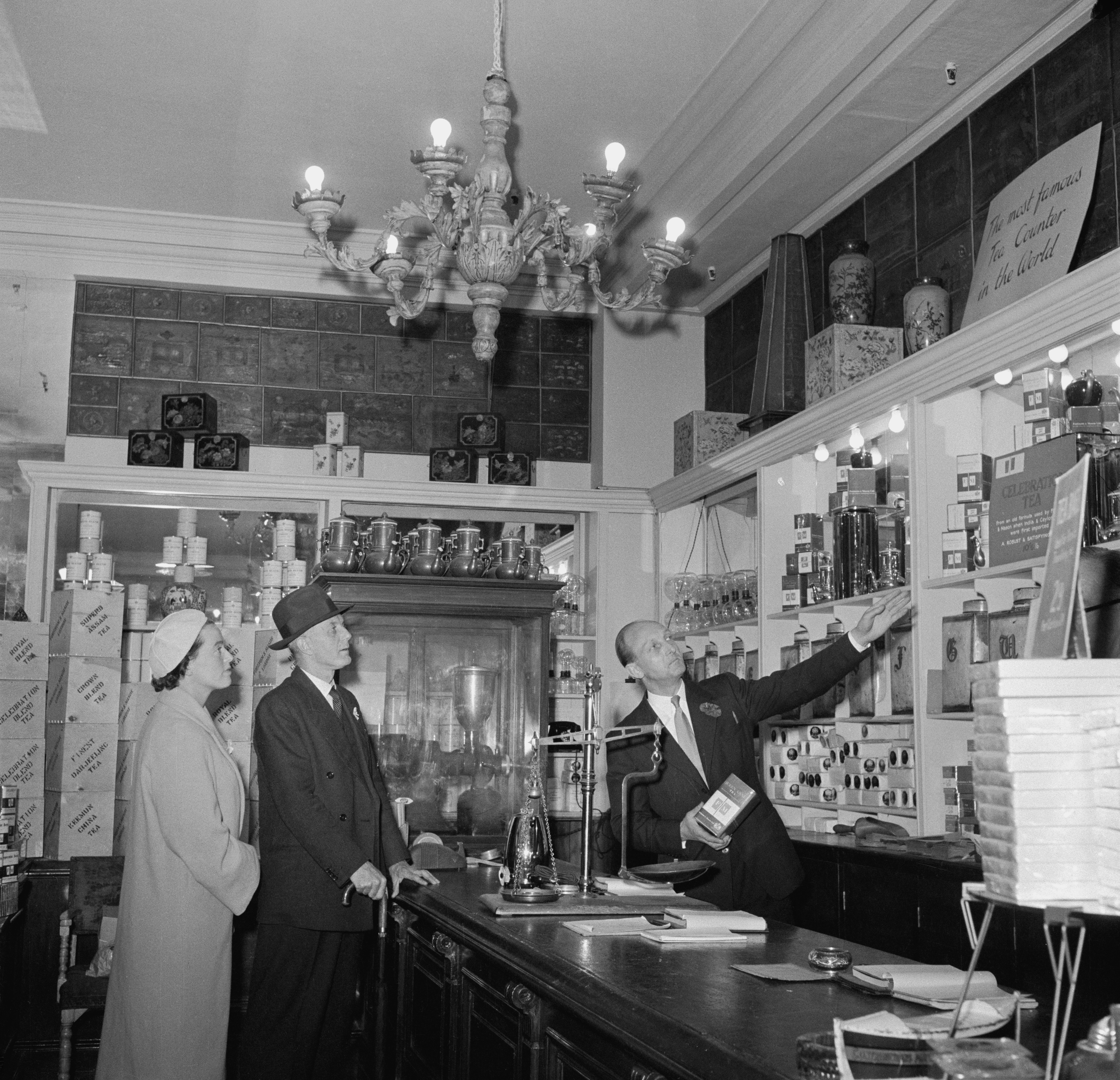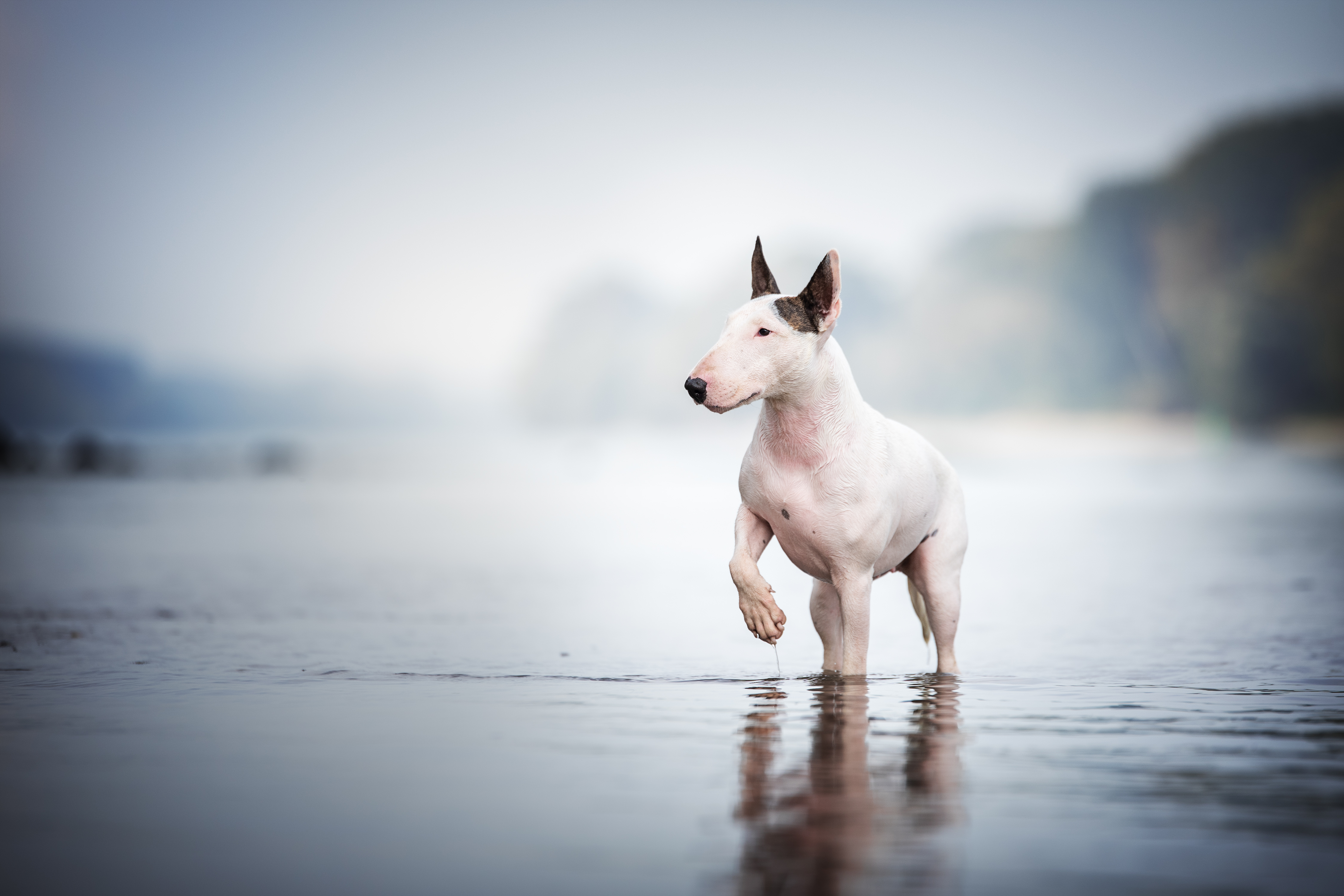Great dogs from history
We take a look at some of the great dogs from history.


Curled up at his master’s feet forever, in the hallowed shadows of St George’s Chapel, Windsor, is a marble wire-haired fox terrier. The sleeping dog is part of Sir Bertram Mackennal’s tomb effigy of Edward VII and Queen Alexandra, completed in 1927. The dog in question is Caesar, a gift to the King in 1902, bred by Kathleen, Duchess of Newcastle, renowned breeder of wire-haired fox terriers and borzoi.
Caesar had been the King’s inseparable companion. He slept in his bedroom and accompanied him at home and abroad. It was even rumoured that the King suspected Caesar of having come close to jeopardising the Entente Cordiale, such was the dog’s bad behaviour towards strangers, among them unfamiliar diplomats. Excitable, by turns irascible and lovable, but unfailingly loyal to his master, from his unique vantage point, the King’s dog had glimpsed history in the making. In Mackennal’s sculpture, Caesar stakes his claim to immortality.
Caesar is one of many dogs in the footnotes of human history, as a new book, The Great Grisby: Two Thousand Years of Exceptional Dogs, reminds us. For centuries, dogs have been the cherished companions of princes and politicians, of rogues and rakes, mistresses and musicians, poets, painters and even policemen. They are among history’s silent witnesses.
Eos was a black-and-white greyhound bitch, one of the few companions allowed to accompany Prince Albert from his native Coburg to his new life in England as the husband of Queen Victoria. Fond of plum cake and hunting, Eos was given to 14-year-old Albert in 1833, when his elder brother, Ernest, left the family castle of Rosenau to study in Bonn.
Seven years later, it was Albert himself who left Rosenau. Small wonder his attachment to Eos, a living souvenir, was so great. Until her death in 1844, the dog played her part in the royal marriage, esteemed as highly by Victoria as by Albert: the Queen commissioned Landseer’s famous portrait of Eos as a surprise Christmas present for her husband.

Something of this role of emotional prop was evidently played by Venom, a bulldog bitch belonging to Amelia, Viscountess Castlereagh in the second decade of the 19th century. Lady Castlereagh was a formidable figure in London society, eminently well connected, a lady patroness of Almack’s, described by Welsh grenadier guardsman Rees Howell Gronow as a ‘très grande dame’. She was married to Robert Stewart, Viscount Castlereagh as Foreign Secretary in the aftermath of Napoleon’s defeat, architect of the Congress system of European equilibrium.
Although their relationship was much remarked on by their peers on account of its happiness, it proved childless. Instead, Lady Castlereagh kept a menagerie of exotic animals, including kangaroos, emus and a tiger, in iron cages at Loring Hall, the couple’s house east of Sidcup: at any of her parties, ‘no part of the entertainment was more popular than the exhibition of Lady Castlereagh’s pets’.
Sign up for the Country Life Newsletter
Exquisite houses, the beauty of Nature, and how to get the most from your life, straight to your inbox.
These also included several bulldogs, one of which was Venom, a hefty specimen who accompanied the Foreign Secretary and his wife to the Congress of Vienna. Three years later, in 1817, Venom bit Lord Castlereagh so viciously on the hand that the press reported ‘the sinews of the first and second fingers [were] separated, and the nail and top of the first finger [were] nearly torn off’. The dog does not appear to have been punished as a result.
If Venom made an unlikely companion for a politician’s wife described as a stickler for propriety, Flush, the cocker spaniel celebrated by Victorian poet Elizabeth Barrett Browning as her ‘inseparable’ companion, was equally assiduous in proving his loyalty. During his mistress’s clandestine courtship by fellow poet Robert Browning, Flush bit the dashing interloper.
The dog’s skills extended beyond aggression, however: his mistress claimed he could distinguish between the letters A and B one possible explanation for the three kidnapping attempts he survived. The dog’s prominence in Barrett’s love letters to Browning afterwards inspired Virginia Woolf’s parody, Flush: A Biography. That mischievous jeu d’esprit was an alternative to the intensely sentimental poem To Flush, My Dog, in which Barrett herself hymned her devotion to the ‘loving fellow-creature’ who never protested at dull days spent in an invalid’s darkened room, lightened only by the touch of her ‘pale thin hand’ stroking his ears.
It is the spirit of To Flush, My Dog, rather than its quality as verse, that continues to recommend the poem to new generations of readers. In the case of Antoinette du Ligier de la Garde Deshoulières, forgotten French poet and courtier of the reign of Louis XIV, her remarkable spaniel, Zémire, survives in a series of surprising anecdotes more than in any of Deshoulières’s little-read verse.
The poet, noticing Zémire’s unusual alertness, decided to put that trait to good use and trained the dog to recognise specific words and the objects they referred to. So successful were Deshoulières’s efforts in this direction that, in time, she was able to request that Zémire fetch her handkerchief, a shoe, one of her gloves. As if to underline her serviceability, Zémire would entrust the requested item only to Deshoulière herself or her lady’s maid.
Similarly assiduous was a Newfoundland belonging to Richard Wagner in the late 1830s. The dog’s name was Robber, but he might more accurately have been called Robbed. He belonged initially to the English owner of a shop in Riga (then part of the Russian empire), where Wagner became musical director of the local opera. So enamoured of the young musician did the dog become during Wagner’s visits to the shop that it took to following him home. Even after Wagner’s departure for Mitau, 25 miles south of Riga, Robber continued to journey fruitlessly to his former home. Defeated, the shop owner decided it would be easier simply to give the dog to Wagner.
The relationship of dog and new master was not to remain happy for long, however. In September 1839, Wagner lost Robber in Paris and the two were never reunited. More than three years would elapse before Wagner’s first successfully staged opera, Rienzi, so Robber was never able to share in his master’s success.
In the case of a young dachshund called Lump (German for ‘rascal’), that situation was reversed. Lump belonged to American photographer David Douglas Duncan, who was commissioned to photograph Pablo Picasso in his Cannes home on April 19, 1957. Picasso was then among the most famous artists in the world. As Robber had done a century earlier, Lump jumped ship. He lived with Picasso for six years and features in a number of the artist’s paintings.
Perhaps it was a temperamental affinity that brought them together: like artists, dachshunds are sensitive but stubborn creatures. Although Picasso’s hillside mansion was home to a whole host of dogs among them several terriers, poodles, a German shepherd, a boxer and three Afghans Lump was the only one he ever picked up. And even after Mr Duncan reclaimed him, their existences seemed to remain entwined: the painter and his dog of a lifetime died within 10 days of each other, in 1973.
‘The Great Grisby: Two Thousand Years of Exceptional Dogs’ by Mikita Brottman, is published by HarperCollins (£16.99)
More tails of devotion
History abounds with stories of dogs who, as loving companions, have remained loyal unto death, including the unnamed Skye terrier who accompanied Mary, Queen of Scots to the scaffold, concealed in her skirts.
Sigmund Freud’s chow, Yofi, ate all her meals with him and stayed by his side even when he was seeing patients, once leaping onto the couch protectively to pin down a man who had raised his voice.
Others have lived tantalisingly close to the centre of power, such as Sir Winston Churchill’s brown poodles. His first, Rufus I, shared with him the tempestuous days of the Second World War and subsequent ones acted as an obliging comic foil. Watching Bill Sikes try to drown his bull terrier in an adaptation of Oliver Twist, Churchill covered Rufus II’s eyes with his hand. ‘Don’t look now,’ he whispered. ‘I’ll tell you about it later.’
Country Life is unlike any other magazine: the only glossy weekly on the newsstand and the only magazine that has been guest-edited by HRH The King not once, but twice. It is a celebration of modern rural life and all its diverse joys and pleasures — that was first published in Queen Victoria's Diamond Jubilee year. Our eclectic mixture of witty and informative content — from the most up-to-date property news and commentary and a coveted glimpse inside some of the UK's best houses and gardens, to gardening, the arts and interior design, written by experts in their field — still cannot be found in print or online, anywhere else.
-
 Bye bye hamper, hello hot sauce: Fortnum & Mason return to their roots with a new collection of ingredients and cookware
Bye bye hamper, hello hot sauce: Fortnum & Mason return to their roots with a new collection of ingredients and cookwareWith products sourced from around the world, the department store's new ingredients and cookware collection is making something of a splash.
-
 Sheep-herding dogs, The Archers and Sir David Attenborough: Country Life Quiz of the Day, May 8, 2025
Sheep-herding dogs, The Archers and Sir David Attenborough: Country Life Quiz of the Day, May 8, 2025Thursday's Quiz of the Day features dogs, David (Attenborough) and radio drama.